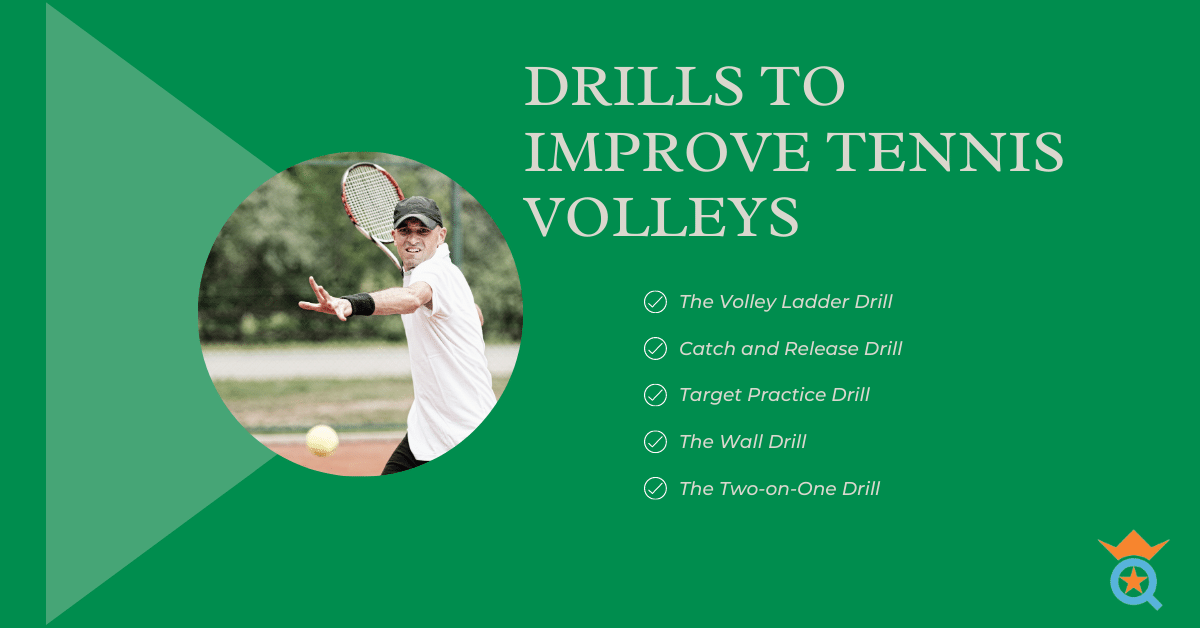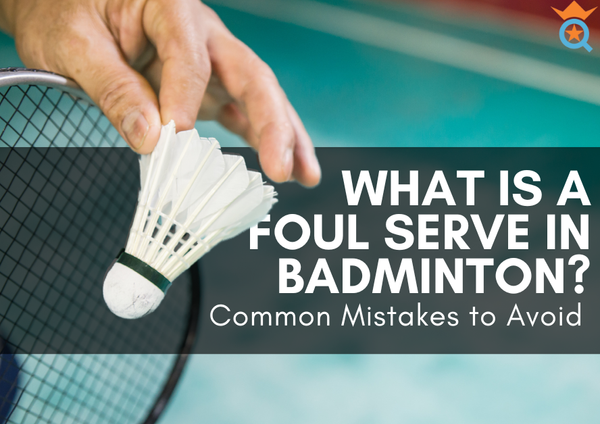Tennis volleys are one of the most important shots in the game. Whether you're playing singles or doubles, mastering the art of the volley can make all the difference in your game.
It requires good footwork, quick reflexes, and a solid grip. In this article, we will explore the key elements of good tennis volley technique, including footwork, racquet positioning, and momentum.
We will also provide tips for both forehand and backhand volleys and strategies for playing doubles. Additionally, we will recommend resources for players who want to take their volley skills to the next level.
So, whether you're a beginner or an experienced player, read on to learn how to improve your tennis volleys and elevate your game.

The Importance of the Right Grip for Tennis Volleys
Having the right grip is essential for successful tennis volleys, and the continental forehand grip is widely recommended for both forehand and backhand volleys.
Using this grip offers a solid foundation for clean, powerful volleys and allows players to be effective net players in singles and doubles matches.
When playing near the net, quick reactions are crucial to fending off fast-paced shots from your opponents. The advantage of using the same grip, like the continental grip, for both forehand and backhand volleys is that it enables seamless transitions between shots, allowing players to maintain their momentum and focus.
This swift adaptability greatly enhances a player's ability to dominate the net and score crucial points. So, mastering the right grip and being able to react quickly will elevate your tennis game to new heights.

Understanding the Three Key Elements of Good Volley Technique
Now that we've emphasized the importance of the right grip for tennis volleys, it's crucial to delve into the three key elements that contribute to good volley technique. By mastering these components, you can significantly improve your net game and enhance your overall performance on the tennis court.
Volley Footwork and Positioning
Efficient footwork and positioning are essential for executing successful volleys. The right technique involves a 45-degree angle stance with staggered feet and slightly closed hips.
For right-handed players, the left foot should be forward for forehand volleys and the right foot forward for backhand volleys.
Proper footwork, such as the split step, helps players react quickly to incoming balls and maintain control during volleys.
Racquet Positioning
Another vital aspect of good volley technique is correct racquet positioning. To hit clean volleys, the racquet should be behind the point of contact without going behind the player's body.
Avoid bringing the racquet too high or too far back, as this can cause errors in timing and control.
Instead, keep your hand slightly under the racquet head and make small adjustments to the strings' tilt based on the height of the volley.
Maintaining Forward Momentum
Lastly, keeping your momentum moving forward is crucial for powerful and effective volleys.
By transferring your weight from the back foot to the front foot while opening your hips, you can channel the energy through the racquet and into the ball.
Don't be afraid to approach the net; staying on the balls of your feet will give you the agility needed to dodge incoming shots.
Understanding and perfecting the three key elements of good volley technique — footwork and positioning, racquet positioning, and maintaining forward momentum — will greatly improve your ability to hit precise, powerful volleys.
Remember to incorporate the continental forehand grip and these techniques to transform your net game and elevate your overall tennis performance.

Forehand Volley Technique and Tips
Building upon the foundation of understanding the three key elements of good volley technique, let's dive into mastering the forehand volley technique and tips for better execution. The forehand volley is often a preferred shot for many tennis players, as it allows for greater reach and control.
When executing a proper forehand volley, it's crucial to maintain the right body and racquet positioning, as well as to follow specific tips that help in adjusting the direction of the ball and maintaining balance and control.
To achieve a successful forehand volley, ensure that your left hand is extended from your body and up, especially for right-handed players.
As you hit the volley, bring the left hand closer to your body so that both arms come together, which will help you maintain balance and control.
When it comes to racquet positioning, make sure it's slightly behind the point of contact but not behind your body. Keep the strings tilted slightly upward, with adjustments made according to the height of the incoming ball.
One of the critical aspects of a good forehand volley is the ability to change the direction of the ball. This can be achieved by making small adjustments to your wrist and racquet position.
Hitting volleys crosscourt (left for right-handed players), have the racquet head in front of your wrist. For down-the-line forehand volleys or shots to the right, close your stance a bit more and open your wrist slightly to bring the racquet head back a little more.
Remember that minor changes in racquet position can result in significant directional changes for the volley.

Backhand Volley Technique and Tips
Now, let's explore the backhand volley technique and tips to help you become an even more well-rounded player at the net. The backhand volley can be challenging, but with the right steps and focus on proper hip and racquet positioning, you can improve your technique and avoid common mistakes.
Here are some key points to consider when working on your backhand volley:
- Close your hips and feet early: As soon as you recognize that you're going to hit a backhand volley, turn your hips and feet to get into the proper position. This early preparation will help you time the volley better and provide a solid foundation for the shot.
- Proper racquet positioning: Ensure that your racquet is slightly behind the point of contact and not too high. Starting with the racquet too high is a common mistake that causes players to chop down on the ball, leading to weak and floating volleys. Instead, maintain a lower racquet position and lift it as you swing, if needed.
- Open your hips to drive the racquet forward: Once your hips are closed and your racquet is in the right position, open your hips to drive the racquet head forward through the ball. This motion will help you generate power and control your backhand volleys.
By focusing on these key steps and avoiding common mistakes, you'll be able to improve your backhand volley technique and become a more confident and effective player at the net. Remember that practice makes perfect, so keep working on your backhand volleys, incorporating these tips and techniques to elevate your tennis game.

Drills to Improve Tennis Volleys
Improving your tennis volleys requires consistent practice and targeted drills that focus on specific aspects of your game, such as footwork, racquet positioning, and directional control. Here are some effective drills to help you enhance your volley skills:
1. The Volley Ladder Drill
This drill focuses on footwork and positioning. Set up a ladder or place cones in a zig-zag pattern on the court. As your partner or coach feeds you balls, move through the ladder or cones while maintaining proper footwork and executing volleys. This exercise will help improve your agility and quickness at the net.
2. Catch and Release Drill
To work on racquet positioning and control, try the catch and release drill. Have a partner or coach feed you balls at the net. Instead of hitting the ball, catch it with your racquet, ensuring that your racquet is in the correct position. Then, release the ball by simply pushing it back over the net. This drill helps you focus on proper racquet positioning and touch.
3. Target Practice Drill
For improving directional control, set up targets on the court, such as cones or tennis ball cans. As your partner or coach feeds you balls, aim for the targets with your volleys. This drill not only helps you work on your aim and control but also helps you become more aware of the subtle changes in your racquet angle needed to direct the ball accurately.
4. The Wall Drill
A classic and effective drill for enhancing your volleys is the wall drill. Stand about 10-15 feet away from a wall and practice hitting forehand and backhand volleys against it. Focus on maintaining proper technique, footwork, and racquet positioning. The wall provides constant feedback and allows you to fine-tune your volleys with each repetition.
5. The Two-on-One Drill
This drill is excellent for simulating match-like situations and improving your reaction time and decision-making at the net. Have one player at the net and two players at the baseline. The net player must volley the balls fed by the baseline players, who can hit groundstrokes or lobs. The net player should focus on quick reactions, proper technique, and placement.
Stay committed to your practice, and your volley game will reach new heights.

Advanced Tennis Volley Techniques
Advanced tennis volleying techniques can be a game-changer for players who want to take their game to the next level. Three techniques that can be particularly effective are the swinging volley, drop volley, and punch volley.
The swinging volley is used when a player is moving forward and needs to hit a shot in the air with a lot of power. The drop volley involves hitting the ball softly so it drops just over the net, making it difficult for the opponent to return.
Finally, the punch volley in tennis is a shot that's hit with a short backswing and a punch-like motion, generating a lot of power with minimal effort.
Incorporating these advanced techniques into your game can help you gain an edge over your opponents and win more points at the net.

Doubles Volley Technique and Strategies
Playing doubles presents unique challenges and opportunities for tennis players, especially in the realm of volleying. In doubles play, the ability to move efficiently and quickly at the net is crucial for success.
Good volleying skills are particularly important in doubles because it enables players to finish points at the net and be aggressive in attacking their opponents' shots. To be effective in doubles volleying, players must have good footwork, reflexes, and communication with their partners.
Some strategies for success in doubles include poaching, cutting off angles, and playing aggressively. Practicing drills that focus on these strategies can help players improve their doubles volleying technique and become more successful in doubles play.

Resources for Further Improvement
Continuing to improve one's tennis game requires dedication and a willingness to seek out resources for further learning. In addition to the tennis volley drills and techniques discussed above, players can take advantage of a variety of resources to improve their volleying skills.
Here are some recommendations:
- Online tennis coaching platforms, such as Play Your Court, offer personalized instruction and feedback for players of all skill levels.
- The book "Winning Ugly" by Brad Gilbert provides insight into the mental and strategic aspects of the game, including tips for effective net play.
- The video series "Tennis Technique 101" by Feel Tennis provides comprehensive instruction on proper technique for a variety of shots, including volleys.
- YouTube channels, such as Essential Tennis and Tennis Evolution, offer a wealth of free instructional videos covering a range of topics, including volley skills.
By incorporating these resources into their training regimen, players can continue to improve their volley skills and take their tennis game to the next level.

Final Words
Improving your tennis volleys can greatly enhance your game and lead to greater success on the court. By mastering the proper grip and technique, practicing drills, and incorporating more advanced techniques and strategies, players can develop a formidable volleying game that can help them win points and matches.
Additionally, resources such as ebooks, videos, and coaching can provide valuable insights and tips to continue improving your skills. Whether you're a beginner or an advanced player, honing your volleying skills can make a significant difference in your overall game and take you to the next level. So, keep practicing and striving to improve, and you'll soon see the results on the court.








